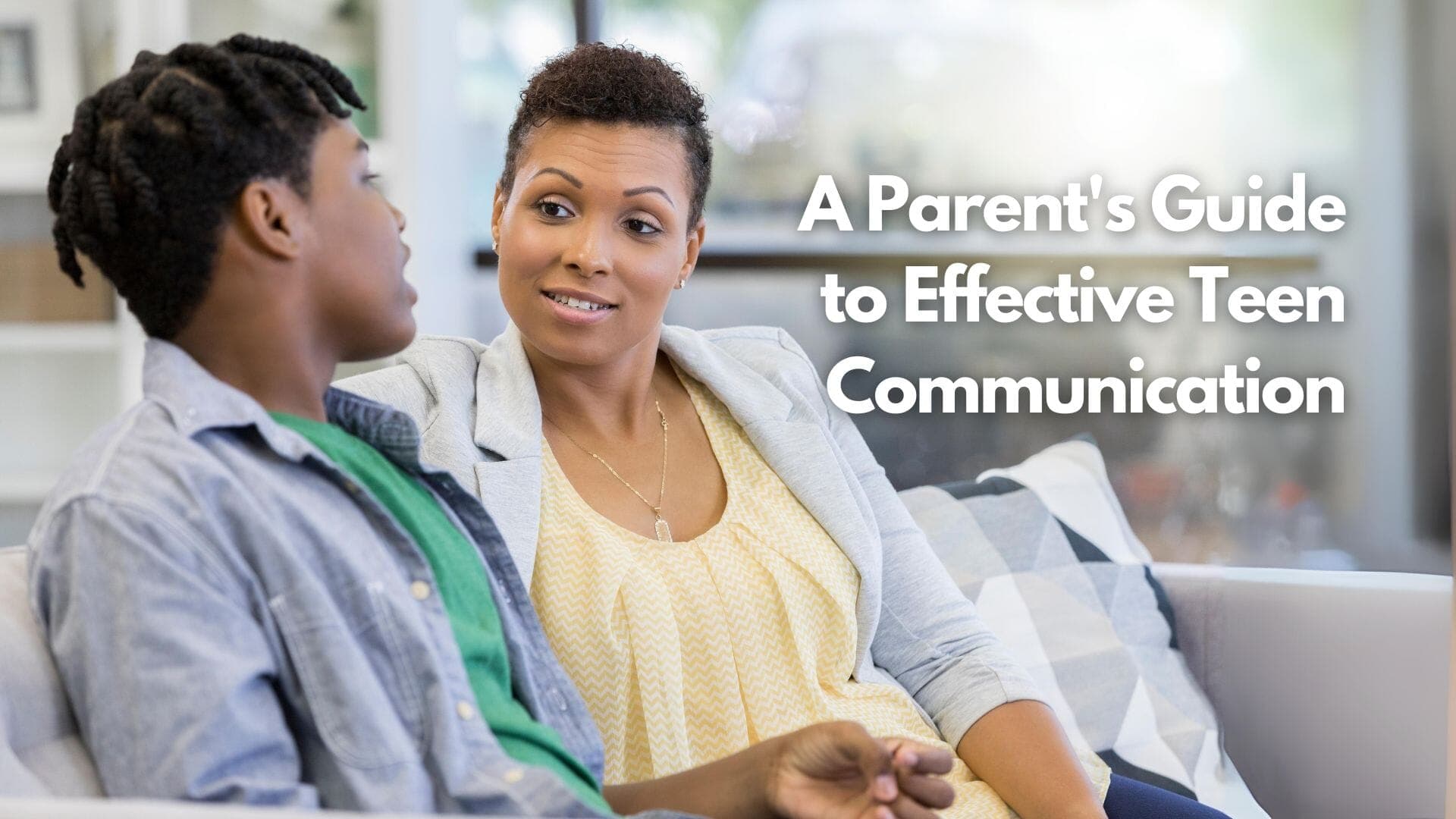We recently hosted a webinar on the crucial topic of effectively communicating with teenagers in today’s digital age. We strongly encourage every parent and guardian to actively learn and engage with their teens to foster healthier relationships and reduce conflicts. A great way to start is by watching our recent webinar, “Effective Communication Strategies for Parents.” This webinar provides a comprehensive guide on how to navigate challenging conversations with your teens, offering valuable insights into building trust and understanding while equipping parents with practical tools to promote healthier dialogues at home.
In today’s digital world, parenting can feel like navigating a minefield. From online gaming to social media, teenagers’ online activities often leave parents scratching their heads, wondering how to guide them toward healthier habits. But here’s the good news: having open, empathetic conversations with your teen can make all the difference!
Inspired by insights from Dr. Jay Rodriguez and principles from Phil M. Jones’s book “Exactly What To Say,” this blog provides practical strategies to help you engage in meaningful dialogues with your teenage children. Let’s dive in!
The Digital Dilemma: Why Conversations Matter
We all know that social media and online gaming can have a significant impact on teens’ mental health. Anxiety, depression, and feelings of loneliness are just some of the challenges our kids face today. Unlike when we were growing up, the online world adds a new layer of complexity to communication. Teens are not just interacting with their peers; they’re navigating a vast, interconnected digital landscape that can sometimes feel overwhelming.
As parents, our role isn’t just to set rules but to guide our children through this digital maze with understanding and support. This begins with open, judgment-free conversations that encourage teens to share their experiences and feelings. By fostering a safe space for dialogue, we can help them develop healthier online habits and build stronger relationships both online and offline.
Strategy 1: The Feel-Felt-Found Approach
The Feel-Felt-Found approach is a tried-and-true method that can help bridge the communication gap between you and your teen. This strategy works by validating your teen’s feelings, sharing a similar experience from your past, and gently guiding them toward a healthier perspective. It’s a simple yet powerful way to connect with your teen on a deeper level, showing them that you truly understand where they’re coming from.
- What It Is: The Feel-Felt-Found approach is a great way to show empathy. It involves acknowledging your teen’s feelings, sharing a relatable experience, and suggesting a possible solution.
- Example Script: “I understand you feel gaming helps you relax. I felt the same way when I was your age, but I found that doing other activities also helped me unwind.”
- Why It Works: This strategy builds rapport by showing your teen that you understand their perspective. It also creates an opportunity to introduce new ideas in a non-confrontational way. By sharing your experiences and the lessons you’ve learned, you provide a relatable and non-judgmental pathway for your teen to explore healthier habits.
Strategy 2: The What-If Technique
If you’ve ever struggled to get your teen to consider alternatives to their current habits, the What-If technique might just be your new best friend. This strategy gently nudges your teen to think about different scenarios and outcomes without feeling pressured. It’s all about planting seeds of curiosity and encouraging them to explore how small changes might positively impact their lives.
- What It Is: The What-If technique encourages teens to think about alternative scenarios and outcomes. It’s all about opening up possibilities.
- Example Script: “What if you tried reducing your gaming time for a week to see if it makes a difference in your mood or energy levels?”
- Why It Works: This strategy promotes curiosity and critical thinking. It helps teens consider how their choices might affect them, all while feeling supported by you. By presenting the idea as a low-pressure experiment, you empower your teen to explore new habits on their own terms, fostering a sense of agency and personal growth.
Strategy 3: The Simple Swap
Sometimes, getting your teen to step away from the screen is as simple as offering them a fun alternative. The Simple Swap strategy is perfect for those moments when your teen might just need a little nudge to try something different. By suggesting a swap, you’re not taking away their favorite activity—instead, you’re offering another enjoyable option that could also benefit their well-being.
- What It Is: The Simple Swap suggests alternative activities that are both healthy and fun without making your teen feel like they’re missing out.
- Example Script: “Instead of gaming all afternoon, how about we go for a walk or play a sport together? It could be a fun way to relax.”
- Why It Works: Offering a tangible alternative meets your teen’s need for relaxation or socialization while promoting healthier habits. It’s all about finding balance! By proposing a fun, offline activity, you provide your teen with opportunities to engage in real-world experiences that enrich their lives and strengthen your bond as a family.
Tips for Starting the Conversation
Starting the conversation can often be the hardest part. Here are some tips to help you get going:
- Find the Right Moment: Choose a time when you and your teen are relaxed. Taking a drive, going for a walk, or sharing a meal are great opportunities for a casual chat. These settings are less confrontational and more conducive to open dialogue.
- Ask Open-Ended Questions: Encourage your teen to share by asking questions like, “What do you like most about gaming?” or “How do you feel after spending time on social media?” Open-ended questions invite them to express their thoughts and feelings, making them feel heard and valued.
- Be Non-Judgmental: Create a safe space where your teen feels comfortable being honest. Remember, this is about understanding, not lecturing. By approaching the conversation with curiosity rather than criticism, you can foster a deeper connection with your teen.
Addressing Common Challenges
It’s normal for your teen to be resistant at first or unsure how to socialize offline. Here are some ways to handle these challenges:
- If Your Teen is Resistant: Acknowledge their feelings and gently suggest trying something new. Patience is key here—change doesn’t happen overnight! By showing understanding and offering support, you can help your teen feel more comfortable with stepping out of their comfort zone.
- If They Don’t Know How to Socialize Offline: Help them brainstorm activities or suggest inviting friends over for a non-digital hangout. Sometimes, they just need a little nudge to get started. Encourage them to try new things and remind them that it’s okay to feel awkward or unsure at first.
Building a Connection Beyond the Screen
Encourage face-to-face interactions and outdoor activities to strengthen your bond with your teen. Whether it’s playing a sport, going for a walk, or just hanging out at the park, these moments are invaluable. They provide opportunities for meaningful conversations and shared experiences that foster trust and connection.
And remember, your behavior sets an example. By modeling balanced tech use and engaging in offline activities yourself, you show your teen that life exists beyond the screen. It’s about finding a healthy balance that allows both online and offline experiences, enriching your teen’s life in every aspect.
Conclusion
Talking to your teen about their online activities might seem daunting, but it’s essential for building a strong, healthy relationship. By using empathetic communication strategies like Feel-Felt-Found, What-If, and Simple Swap, you can open up meaningful dialogues that promote better habits and understanding. Remember, it’s all about being present, listening, and showing empathy. Your efforts to connect and communicate will pave the way for a more positive and fulfilling relationship with your teen.
As a reminder, don’t forget to check out our recent webinar, “Effective Communication Strategies for Parents,” for a more in-depth discussion on these important topics. This webinar provides a comprehensive guide on navigating challenging conversations with your teens, offering practical tips to build trust and understanding. By watching the webinar, you’ll gain valuable insights into fostering healthier dialogues and learn effective strategies to positively influence your teen’s behavior.
Additionally, consider exploring more resources like “Parenting in the Digital World: A Step-by-Step Guide to Internet Safety (3rd Edition)” by Clayton Cranford. This book, written by the nation’s leading law enforcement educator on social media and online safety for children, answers parents’ most important questions about keeping their children safe online.






